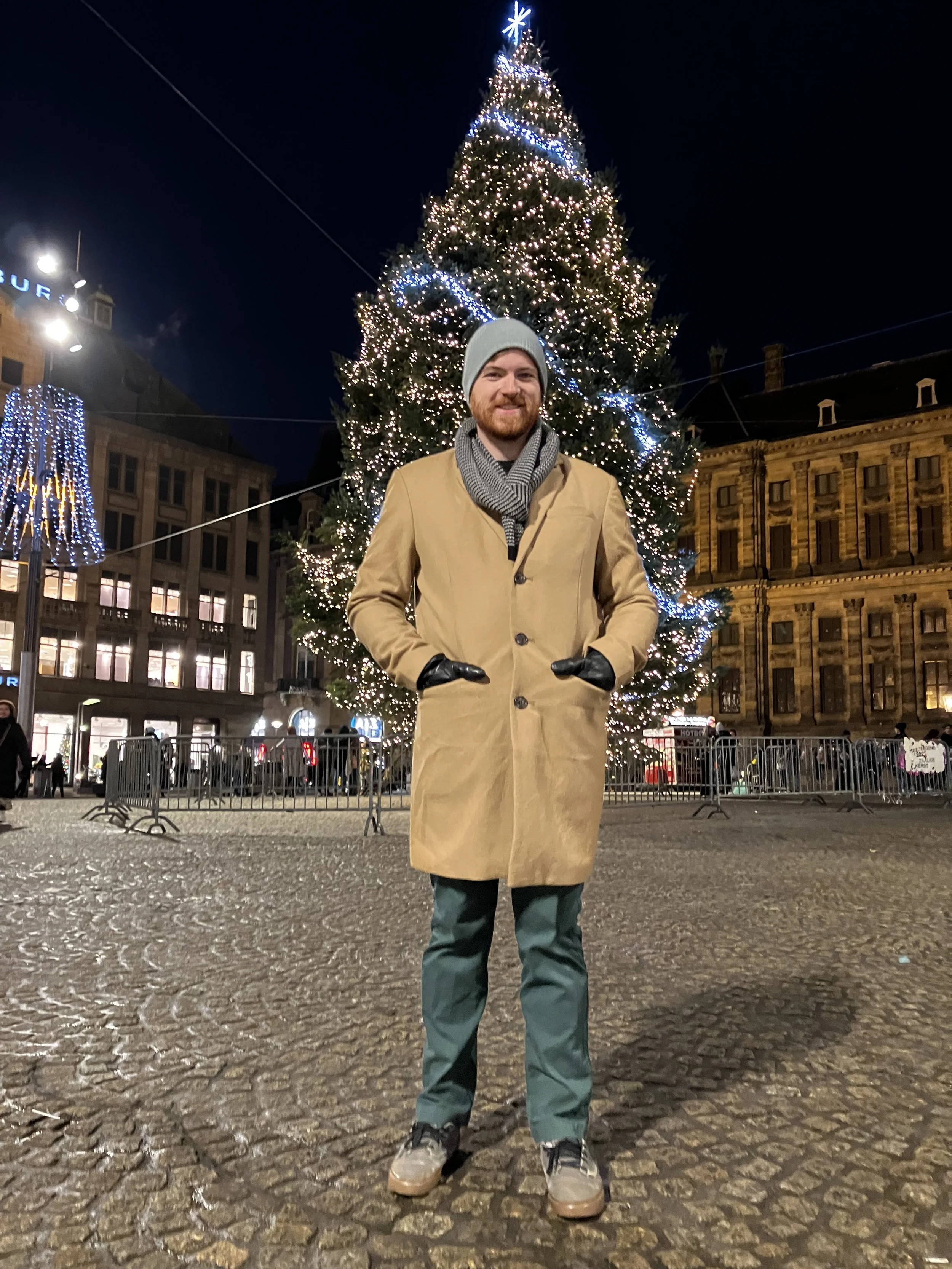Amsterdam, Netherlands (Day Four): Hortus Botanicus, Oude Kerk, & a Day-Trip to Zaanse Schans
If you missed day three of our Christmas trip to the Netherlands & Belgium, go here.
On our fourth day in Amsterdam, we found ourselves with an unexpectedly free morning. I had originally booked us an all-day trip from 8 am to 6:30 pm to visit Zaanse Schans and Giethoorn, a picturesque village that seemed quintessentially Dutch, with its boat-filled waterways and centuries-old thatched-roof houses. Unfortunately, the tour company cancelled on us late the previous evening due to an incoming snowstorm, and we were only able to rebook a half-day trip to Zaanse Schans. In the meantime, we needed to find a few activities to fill our time near-ish the area of town where we were now meeting our tour guide.
Hortus Botanicus
We heard about the Hortus Botanicus from our Festival of Lights tour guide, and it didn’t take much convincing for me to add this to the itinerary. The Hortus Botanicus is one of the oldest botanical gardens in the world, established in 1638 by the Amsterdam city council (the Oxford Botanic Garden is one of the few older ones; check out my last visit to it in 2017). Like many European botanic gardens, its collections were initially amassed through imperial pursuits—in this case, largely by the Dutch East India Company. Much of its initial collection served either a medicinal or commercial purpose.
The garden hosts several greenhouses. The first we visited was the butterfly greenhouse. Tropical butterflies fly freely here amongst coffee plants, cacao trees, tea, rice, pepper plants, and sugar cane.
The three-climate greenhouse was an impressive interconnected greenhouse system that showcased subtropical, desert, and tropical plants; each zone had its own temperature, humidity, and air circulation. There were walkways to view the zones from different perspectives—a rare experience to walk amongst the treetops—and it was one of the most breathtaking greenhouses I’ve ever seen.
The final greenhouse was the palm greenhouse. This impressive structure was designed in 1911 and holds an impressive array of palms, cycads, and container plants during the winter. The most famous plant here is a 350-year-old Encephalartos altensteinii, a South African cycad.
Before leaving, we stopped at the Hortus Café (housed in the beautiful 1875 Orangery building) for lunch. The vibes were immaculate (there’s a tree growing through the middle of the room!), and the food was surprisingly high quality and wonderfully fresh and hot after walking outside through the chilly (mostly dead) gardens.
Oude Kerk
Oude Kerk is Amsterdam’s oldest building, founded in around 1213. It is located in De Wallen, which is Amsterdam’s main red-light district, and this was the only time we ever ventured there. It was quite ironic to pass disturbingly mannequin-like women in brothel windows as we were headed to visit a church!
It was originally a Roman Catholic Church, eventually becoming Calvinist, but much of its Catholic art was destroyed during the 16th century’s Great Iconoclasm, when Catholic religious images were destroyed throughout Europe. The ceiling murals were spared, unreachable by the mobs, and it remains the largest medieval wooden vault in Europe. One of my favorite aspects of the church were the misericords, or the carved wooden imagery found by the seats (ft. a bat threatening a cat, a demented owl, and a man pooping a pile of coins).
Zaanse Schans
Finally, we made it to our day-trip out to Zaanse Schans, a popular tourist attraction a short half-hour drive outside Amsterdam. The neighborhood is composed of historic windmills and distinctive green wooden houses that were relocated from across the Netherlands to recreate an 18th/19th-century village and preserve Dutch history/heritage. We watched a demonstration on wooden clog-making, where we learned that the Dutch clog is the safety shoe of the Netherlands (and I had to convince Ryan that we didn’t have room to bring home a pair in our suitcase). We also went to a cheese-making demonstration at Henri Willig, where we learned about the cheese-making process. This was followed by one of the best parts of the trip: this immense cheese store with unlimited samples. We bought several cheeses for ourselves and as Christmas gifts, and we ended up loving them so much that we ordered more once those ran out.
De Kat was the most interesting windmill we toured—it is the only remaining working windmill in the world that makes paint. I’d never considered a windmill being used for a purpose other than electricity or flour-making, so I found this quite fascinating! The mill grinds materials like chalk to create paint pigments.
When we arrived back in Amsterdam, we grabbed dinner and took one last walk through the beautiful, Christmassy streets. We had an early start the next day as we headed to Belgium!
Thanks for reading!
Up Next: Brussels Christmas Markets & a Christmas Concert at La Monnaie De Munt



























































